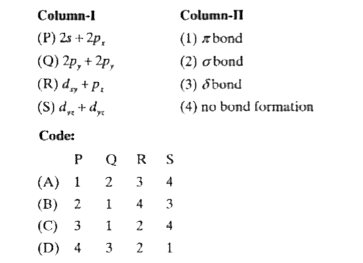If two different non axial d−orbitals having xz nodal plane form π−p∮by overlapping each other, then internuclear axis will be Solution in Gujrati
x
y
z
they don't form π bond
The correct Answer is:D
N/A
Similar Questions
If two different non-axial d-orbitals having 'xz' nodal plane form π-bond by overlapping each other, then internuclear axis will be :
View SolutionIn which of the following species, d-obitals having xz an yz two nodal planes involved in hybridization of central atoms?
View SolutionMatch the overlapping of orbitals with the type of bond formed. (Consider x-axis as internuclear axis.)

View SolutionIf two different non-axial d-orbitals having 'xz' nodal plane form pi -bond by overlapping each other, then internuclear axis will be :
View SolutionIn which of the following species, d-obitals having xz an yz two nodal planes involved in hybridization of central atoms?
View SolutionIf two different non-axial d-orbitals having 'xz' nodal plane form π-bond by overlapping each other, then internuclear axis will be :
View SolutionAssertion Both pi(2P_(x)) and pi^(**)(2P_(x))MO's have one nodal plane each Reasoning All MO's formed by side way overlapping of 2p orbitals have one nodal plane .
View SolutionWhich of the following overlaps of atomic orbitals does not form pi -bond if z-axis is the internuclear axis?
View Solution
